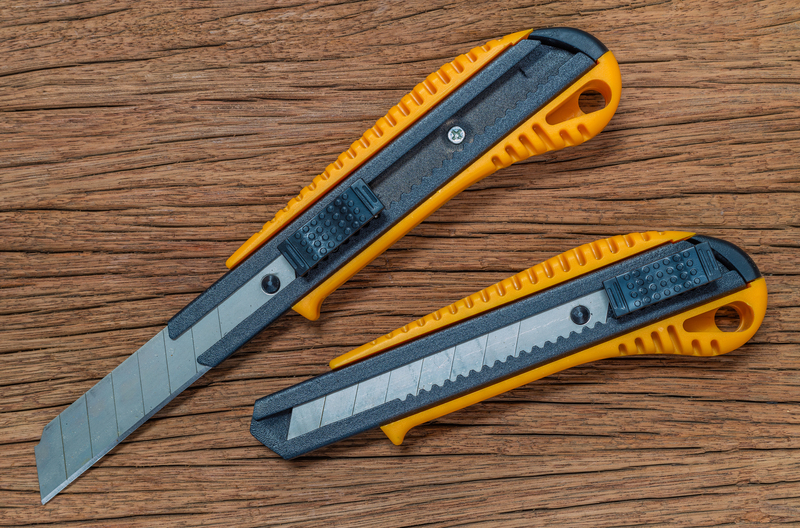The Ultimate Guide to Protecting Your Sofa During Storage
Your sofa is likely one of your most cherished and expensive furniture pieces. Whether you're renovating your home, moving abroad, or simply redecorating, ensuring your sofa stays in perfect condition during storage is crucial. This comprehensive guide explores the best strategies and tips for protecting your sofa during storage, so it remains as beautiful as ever when you're ready to use it again.
Why Is Sofa Protection in Storage Important?
Many homeowners underestimate the risks sofas face while in storage. These common hazards can result in irreversible damage:
- Moisture: Encourages mold and mildew, leading to stains and odors.
- Dust and Dirt: Can accumulate in upholstery, causing discoloration and health issues.
- Pests: Rodents and insects may nest in or damage the fabric and stuffing.
- Physical Damage: Scratches, tears, and dents from improper handling or stacking.
- UV Exposure: Even filtered light may fade certain fabrics over time.
Protecting your living room furniture , especially your beloved sofa, is far more than a simple covering--it's about preparing, storing, and maintaining your sofa properly for the duration of its stay outside your living space.

Essential Steps to Prepare Your Sofa for Storage
1. Thorough Cleaning Is Non-Negotiable
No guide to storing a sofa safely would be complete without emphasizing cleanliness. Trapped dirt and crumbs can attract pests or cause unpleasant odors. Here's how to do it:
- Vacuum All Surfaces: Use the upholstery attachment to get into every crevice, under cushions, and along seams.
- Spot Clean Any Stains: Follow the manufacturer's instructions, using a mild cleaner suitable for your sofa type (fabric, leather, microfiber, etc.). Be gentle to avoid any further damage.
- Let the Sofa Dry Completely: Never store a damp sofa! Moisture can lead to mold and mildew problems.
2. Disassemble Removable Parts
Removing detachable sections can make your sofa easier to move and reduce the risk of structural damage. Carefully take off:
- Cushions and pillows
- Removable legs or arms (if possible)
- Slipcovers or decorative throws
Store these parts in labeled, breathable fabric bags to prevent loss and further protect them from dust and pests.
3. Protecting the Sofa Frame
Wrap the exposed frame, especially the legs, in bubble wrap or thick blankets to safeguard against scratches and scuffs.
Best Materials for Covering Your Sofa
Choosing the right cover material is paramount in your effort to protect your sofa in storage:
- Soft, Breathable Moving Blankets: These are ideal for preventing dust accumulation and guarding against physical impacts without trapping moisture.
- Quality Furniture Covers: Specialized covers are designed to shield against moisture, pests, and dirt. Opt for those made from canvas or thick cotton, which allow for air circulation.
- Plastic Wrap (With Caution): While plastic provides excellent moisture and pest barriers, it can also trap humidity and encourage mildew. Only use plastic for short periods, and never tightly wrap a damp sofa.
Tip: Never use colored blankets or dyed fabrics that might bleed onto lighter upholstery.
Selecting the Right Storage Environment
Climate-Controlled Storage Units
If you value your sofa's longevity, opt for climate-controlled storage. These units maintain a steady temperature and humidity, essential for preventing:
- Mold and mildew in humid seasons
- Cracking or brittleness in dry, cold weather (especially for leather sofas)
- Warping of wood frames
Location within the Storage Unit
Deciding where to place your sofa is just as important as how you prepare it:
- Keep Off the Floor: Elevate your sofa with pallets to avoid contact with potential spills or condensation.
- Avoid Direct Sunlight: Even indirect light over months can fade upholstery.
- Allow Airflow: Leave space around your sofa to avoid musty odors and ensure easy inspection.
Avoiding Stackable Mistakes
Never stack heavy objects on top of your sofa. This can deform cushions, break frames, and lead to permanent indentations.
Extra Protective Measures for Different Sofa Types
Fabric Sofas
- Use moisture absorbers or silica gel packets inside the covered sofa to prevent humidity damage.
- Double-wrap in cloth covers for added dirt protection, but remember to maintain breathability.
Leather Sofas
- Apply a moisturizer or leather conditioner before storing to keep the material supple.
- Never wrap leather directly in plastic--it needs to breathe to avoid mold or drying out.
Sectional and Modular Sofas
- Label and carefully pack connectors and hardware in a small, clearly marked bag.
- Wrap individual sections separately to prevent scuffing and make future reassembly easier.
Pest Prevention During Storage
Pests are attracted to upholstered furniture due to hidden food crumbs or the shelter it provides. To protect your sofa from unwanted guests:
- Thoroughly clean and vacuum before storage
- Use pest deterrents: Place cedar blocks or natural repellents near your sofa (avoid strong chemicals that could stain)
- Seal entry points in storage units to prevent rodent and insect access
Maintaining Your Sofa During Storage
Out of sight doesn't mean out of mind! Protecting your sofa in storage is an ongoing process:
- Inspect periodically: Check every few months for signs of moisture, pests, or mold.
- Air out when possible: Briefly lift the cover to let the sofa breathe and dissipate any trapped humidity.
- Refresh drying agents: Replace moisture absorbers or silica gel as necessary.
Preparing to Take the Sofa Out of Storage
When it's time to bring your sofa home, follow these steps:
- Remove covers and inspect for dust, pests, or any new stains
- Vacuum and clean your sofa again before use
- Treat with appropriate cleaners or conditioners based on your sofa's material
If you discover any odors, allow the sofa to air out in a well-ventilated area before reinstalling it in your home.
Common Mistakes to Avoid When Storing Your Sofa
Protecting your living room sofa during storage is straightforward, but avoiding these pitfalls will safeguard your investment:
- Storing a Dirty or Damp Sofa: Always clean and dry thoroughly before covering.
- Using only plastic wrap: This can trap moisture and foster mold. Prefer breathable fabric covers.
- Stacking heavy items: Doing so deforms cushions and damages frames.
- Neglecting regular inspections: Problems like pests or moisture are easiest to address when caught early.
Additional Tips for Storing Other Upholstered Furniture
- Chairs, Loveseats, Sectionals: Use the same principles as with sofas--vacuum, cover, elevate, and avoid stacking.
- Mattresses and Cushions: Always store flat and keep away from direct contact with floors or walls.
Environmentally Friendly Sofa Storage Solutions
If you're environmentally conscious or wish to avoid plastics, eco-friendly solutions include:
- Reusable canvas or cotton covers
- Old but clean bedsheets or duvets for wrap protection
- Local storage companies offering sustainable, green storage units
Professional Storage Services: When to Consider Expert Help
If your sofa is an antique, valuable, or made from delicate materials (such as silk or fine leather), hiring experts or choosing premium storage is wise. Look for:
- Climate-controlled, monitored facilities
- Professional packing and moving teams
- Insurance for stored furniture
Don't hesitate to ask for references or visit the facility before committing. Your sofa deserves it!

Frequently Asked Questions
How long can I safely store my sofa?
With proper preparation and climate control, your sofa can be stored for several months--or even years--without damage. The key is regular inspection and maintaining optimal conditions.
Should sofas be stored upright or flat?
Store sofas flat on their feet, never on their sides or backs. This preserves the frame's shape and prevents unnecessary strain on the construction.
Can I use plastic wrap on my sofa?
Plastic wrap offers protection but should never touch upholstery directly--use it only as an outer layer over a breathable fabric cover.
Conclusion: Keep Your Sofa Safe for Years to Come
Storing your sofa doesn't have to be stressful. By following these comprehensive strategies--cleaning thoroughly, disassembling where possible, choosing climate-controlled storage, using proper covers, and maintaining regular inspections--you ensure that your sofa will remain protected and ready to grace your living room once more. Remember, the effort you put into safeguarding your sofa today is an investment in its longevity and beauty for years to come.
If you found this ultimate guide to storing your sofa safely helpful, share it with friends or bookmark for future reference. Happy storing!



